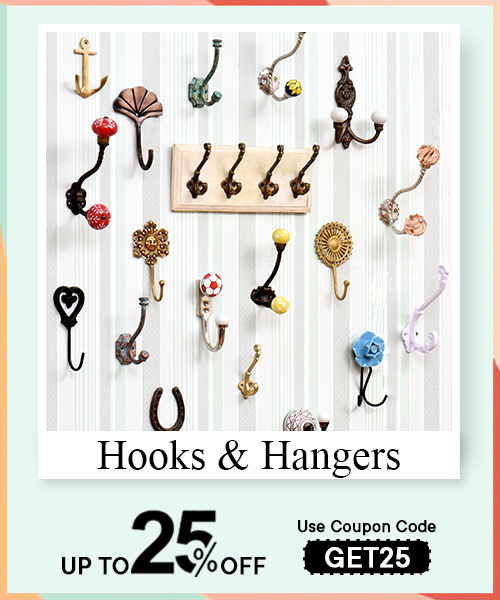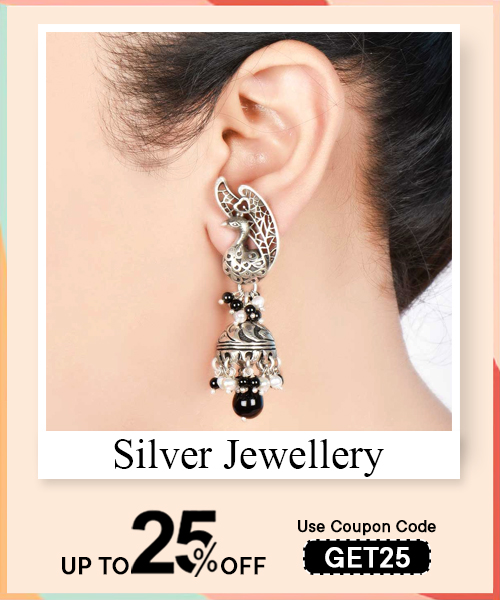A painting is considered contemporary when it engages directly with the current human condition, embracing the present moment’s uncertainties, politics, identities, and aesthetics. It is not defined merely by chronology but by consciousness—it questions form, function, and often the very act of seeing. Unlike traditional art, contemporary painting dissolves boundaries; it fuses disciplines, includes unconventional media, and invites active interpretation. It breathes in cultural simultaneity—rooted in a hyperconnected world—often resisting completion. The contemporary is not a style, but a state of inquiry. It is art that speaks now, for now, aware of its impermanence and potential to disrupt the visual grammar.
Traditional art adheres to form, technique, and representation—often grounded in realism, religion, and historical narrative. Modern art, emerging from rebellion, broke away from realism to explore abstraction, individual perception, and the subconscious. Contemporary painting goes further—it’s not just a reaction but a conversation. It absorbs technology, activism, and hybridity. It critiques systems, shifts meanings, and frequently exists outside the gallery space. It uses irony, fragmentation, and cultural crossover as tools. It does not seek beauty alone—it questions truth. In contrast to modernism’s utopian idealism, contemporary painting often thrives in dissonance, ambiguity, and pluralism. It’s urgent, unstable, and richly layered.
Contemporary styles are defined not by aesthetics alone but by intention and interaction. Key characteristics include conceptual layering, mixed media usage, fragmentation, and an open narrative structure. There’s a move away from mastery toward vulnerability—error is embraced, process is visible. Artists explore identity, politics, consumerism, climate, and digital culture. There’s frequent use of text, repetition, symbols, and archival references. The canvas becomes a site of collision—between personal memory and collective history, between silence and spectacle. Time is nonlinear, space is deconstructed. Every stroke might be a metaphor, a memory, or a rupture. Nothing is neutral. Everything is simultaneously gesture and critique.
Read More : What Is Encaustic Painting? Techniques, History, Materials & Meaning
Major styles include Abstract Expressionism’s descendants, Neo-Expressionism, Street Art, Pop Surrealism, Minimalism, Digital Collage, and Environmental or Bio-Art. Figurative painting re-emerges with psychological intensity, often tied to gender, race, and identity discourse. Conceptual painting challenges materiality; performance often bleeds into paint. Graffiti’s raw spontaneity evolves into fine-art contexts. Some works lean into hyperrealism but with uncanny distortions. Indigenous motifs reclaim space in postcolonial narratives. New styles resist singular classification—they are hybrids of data, culture, politics, and subconscious. What binds them is an urgency to speak to now—to confront, reflect, archive, or shatter—often within one canvas.
Abstract art today is no longer detached from narrative. It embodies trauma, diaspora, and emotional residue. Texture replaces clarity; layering becomes a language. Abstract painting now channels memory, urban chaos, and silent revolt—colors speak pain or protest. Conceptual painting, on the other hand, sometimes resists visual seduction entirely. It might feature sparse marks or embedded text, asking the viewer to read rather than admire. It critiques capitalism, power, and even art itself. Both forms fit contemporary discourse by prioritizing meaning over beauty, ambiguity over closure. They are provocations—alive in their capacity to engage, disturb, and transform space and thought.
Minimalism is characterized by restraint, repetition, spatial harmony, and monochrome palettes. It focuses on surface, rhythm, and materiality—often inviting the viewer into a meditative encounter. Each brushstroke is deliberate, sparse, yet intense. It explores emptiness as form, presence through absence. In contrast, Pop Art explodes with commercial symbols, bold colors, and ironic pastiche. It embraces popular culture, advertising, and mass production—flattening hierarchies between high and low art. The technique often involves silkscreen printing, sharp contouring, and primary colors. Where Minimalism whispers through silence, Pop Art shouts through satire. Both, however, reflect society—one through purification, the other through confrontation.
Contemporary painting emerged distinctly in the late 1960s to early 1970s, after the exhaustion of modernism. The decline of singular narratives in art—such as Abstract Expressionism and formalism—paved the way for pluralism. Post-minimalism, feminist art, and conceptual art marked a shift toward idea-driven practices. Painters began questioning not just what to paint, but why paint at all. The canvas became political, autobiographical, ephemeral. The Vietnam War, Civil Rights movements, and decolonization shaped this new consciousness. Art was no longer isolated from society; it became reflective, critical, and experimental. Contemporary painting, thus, began not with a style but a rupture.
Since the 1970s, contemporary painting has expanded in scope, medium, and ideology. The painter is now often an archivist, activist, or performer. Post-1970s saw the emergence of Neo-Expressionism, Post-Internet Art, and relational aesthetics. Globalization diversified voices—South Asian, African, Latin American, and Indigenous narratives entered mainstream discourse. Digital media disrupted the canvas, and AI began collaborating in creation. Today, painting negotiates with photography, installation, and virtual space. It resists categorization—melding street, ritual, and sci-fi. Artists work within ecological awareness, queer theory, and postcolonial critique. The canvas is now a site of resistance and rebirth.
Contemporary painting is textured with voices that fracture form and function—Julie Mehretu’s spatial chaos, Cecily Brown’s flesh-toned abstraction, and Kerry James Marshall’s charged figuration each echo an inner unrest. Njideka Akunyili Crosby delicately layers intimacy over diasporic memory using transfers and acrylic. Gerhard Richter blurs reality like a memory dissolving mid-sentence. Jenny Saville stretches skin, weight, and vulnerability on large canvases. Their work isn’t just seen—it’s decoded, like a secret left in thick strokes and layered scumbles.
Julie Mehretu, with her architectonic chaos and gestural mark-making, is reshaping spatial politics. Kerry James Marshall confronts the absence of Black bodies in art history with vivid, large-scale portraits. Peter Doig distills memory through pigment, letting narrative slip between abstraction and figuration. Marlene Dumas uses thin washes to evoke psychological states. These artists are influential not merely for aesthetic mastery, but for how they shift narrative structures—embedding voice, identity, and cultural rupture within each layer of oil, ink, or acrylic haze.
Success today transcends technical skill—it’s tethered to conceptual clarity, visual innovation, and cultural resonance. Artists must interrogate form and subject while navigating systems—galleries, biennales, discourse. A successful painter constructs a personal language, often pulling from trauma, heritage, or collective memory. They embrace impermanence—accepting that meaning evolves as context does. Authenticity of gesture and thematic rigor trump commercial appeal. Ultimately, it’s about creating work that demands viewers pause, decode, reflect—work that leaves afterimages in both the eye and psyche.
Emerging artists like Salman Toor, Amoako Boafo, and Tschabalala Self are recoding representation. Boafo’s finger-painted portraits celebrate Black identity with tactile immediacy. Toor conjures queer South Asian interiors with Vermeer-like intimacy. Self collages fabrics and acrylics to exalt the Black female form with sculptural defiance. They challenge institutional frameworks with unapologetic visibility. Their use of color is less decorative than declarative—signaling belonging, politics, and presence. These artists refuse to paint to please; they paint to reclaim, displace, and provoke.
Contemporary artists stretch boundaries—blending oil with collage, graphite with resin. Acrylic dominates for its quick drying and layering ease. Found objects, textile scraps, industrial pigments—they all enter the canvas, like visual archaeology. Artists like Wangechi Mutu splice imagery into fractured bodies, while Mark Bradford peels signage into abstract maps. Mixed media becomes a syntax, not just an aesthetic. Canvas, once sacred, is now substrate—a host for narrative disruptions, experiments, and residue. Texture becomes meaning. Gloss, grit, stitch—each choice deliberate.
Acrylic remains the backbone—versatile, fast-drying, pliable for layering. Oil is still prized for its lushness and historical weight. But newer materials—spray paint, digital prints, metallic leaf, fabric, resin—expand expressive range. Canvas is often replaced by wood, mylar, paper, or unconventional surfaces like denim or tarpaulin. Artists such as Rashid Johnson employ shea butter and soap to evoke culture and ritual. Materials are symbolic—each carries social, geographical, or emotional resonance. The medium becomes a message, and the surface a battlefield.
Mixed media creates tension and texture—inviting viewers to parse meaning not just from image but from surface, absence, and fragmentation. It destabilizes visual expectations. Layers of paper, paint, textile, and digital ephemera interrupt linearity. Artists like El Anatsui construct stories from bottle caps; Doris Salcedo weaves trauma into furniture and concrete. These works resist easy consumption. They reward proximity. The seams, fissures, and overlaps become metaphors—for memory, identity, erasure. Mixed media doesn’t embellish—it deepens. It interrogates what a painting can contain.
Digital tools extend the painter’s hand into new dimensions—blurring lines between painter, programmer, and designer. Software like Procreate or Adobe Fresco allows for infinite edits, layer manipulation, and hybrid aesthetics. Artists can simulate oil or watercolor without material cost. Digital is democratic—it reduces barriers, invites speed, and enables collaboration across time zones. But beyond convenience, it reflects our age—fluid, hyperreal, glitchy. For some, digital is the true contemporary brush, echoing the era’s velocity, chaos, and quiet code.

Symbolism today is less iconographic, more embodied. A strip of lace might evoke migration. A smudge, memory. Artists encode meaning in materials, composition, even omission. Kara Walker’s silhouettes use historical iconography to stab at racial trauma. Ai Weiwei's sunflower seeds critique mass production. Meaning in contemporary art rarely sits on the surface—it lies beneath, waiting for the viewer to excavate. The painting becomes a mirror and a map—layered, metaphorical, confrontational, conceptual. Technique submits to thought. Symbol becomes strategy.
Contemporary artists often veil symbolism in abstraction or found objects—subverting traditional allegory with personal iconographies. Jenny Holzer uses text to spotlight power dynamics. Njideka Akunyili Crosby’s photo transfers signal memory, migration, and hybrid identity. Fire, thread, glass, body—each becomes metaphor. Artists no longer illustrate; they implicate. Symbolism isn’t decorative, it’s discursive—challenging viewers to engage with context, history, trauma. Even blank space speaks. Nothing is accidental. Every object or absence, every gesture or color, becomes a cipher for the self and society.
In contemporary art, concept reigns. Technique is a vehicle—not the destination. An artist’s brushstroke matters less than their “why.” Works are judged by ideas, interventions, and intellectual rigor. Duchamp shattered the myth of the hand in art; today’s artists follow that lineage. Damien Hirst’s clinical assemblages, Barbara Kruger’s text-laden pieces—these works ask us not to admire craft, but to question systems. In this space, a crude line might carry more weight than a flawless portrait—because what matters is what it confronts.
Contemporary paintings are battlegrounds—coated in dissent, memory, identity. They address racial injustice (Titus Kaphar), gender violence (Marlene Dumas), colonial residue (Yinka Shonibare). The political isn't ornamental—it’s structural. Artists mine news, archives, and lived experience, embedding critique in texture and form. Even abstraction becomes political—refusing representation in a hyper-visible age. Color becomes code; erasure becomes emphasis. These works are not neutral—they provoke, mourn, scream, whisper. They challenge comfort. They don’t offer answers—they trouble the gaze, inviting reckoning over resolution.
Galleries and exhibitions act as liminal spaces—bridging studio solitude with public gaze. They contextualize a painter’s ethos within curated narratives, offering texture to brushstroke choices, conceptual symmetry, or emotional dissonance. Exhibitions aren’t just viewports; they’re dramaturgical in nature—where lighting, spacing, and silence curate experience as much as the art. These arenas archive evolving styles, trace lineage, and give voice to undercurrents. They breathe relevance into emerging perspectives, mapping cultural shifts through painted memory.
Contemporary masterpieces reside beyond museums—often in dynamic spaces like the Venice Biennale, Documenta, or Art Basel, where the curation transcends traditional walls. Top-tier galleries such as Gagosian, Hauser & Wirth, or David Zwirner rotate genre-defining works. Additionally, cultural institutions like Tate Modern or MoMA routinely foreground boundary-pushing artists. For rawer energy, independent galleries, biennales, and popup installations in cultural cities—Berlin, Seoul, Mumbai—provide proximity to the avant-garde, where experimentation hasn’t been ironed flat by institutional gloss.
Galleries act as mediators between solitude and society. They amplify an artist’s vision through representation, exhibition planning, and collector networking. Financially, they invest in production costs or provide stipends. Conceptually, curators engage critically with the painter's oeuvre—framing works within relevant art historical and cultural dialogues. A good gallery doesn’t just sell; it incubates—crafting the painter’s legacy through thoughtful promotion, placing work in major collections, and shaping visibility at fairs or biennales that expand the artist’s lexicon.
International fairs are seismic events—they calibrate taste, shift market value, and accelerate exposure. These events compress global dialogues into curated chaos, where commercial interest meets conceptual ferment. For painters, visibility at Art Basel or Frieze can cement status or ignite careers. However, the spectacle also commodifies—risking superficial engagement. Still, these fairs bring together collectors, critics, and curators in a high-stakes theatre that often births new movements, recalibrates artistic worth, and deepens art’s entanglement with capital.
Collecting contemporary art is less transaction, more alchemy. It involves instinct, research, and cultural literacy. While art can appreciate in value, collecting is also about alignment—between collector psyche and the painter’s language. It’s about acquiring time capsules in pigment. Each canvas reflects a social rhythm, a zeitgeist. Investment is layered: financial, emotional, archival. It’s not just what’s hung, but what’s held—a legacy inscribed in line, shadow, and intention, waiting to be re-read across decades.
Yes—if approached with informed patience. Contemporary art offers both financial upside and cultural capital. Blue-chip names (e.g., Gerhard Richter, Yayoi Kusama) command strong resale value, while emerging artists can become sleeper investments. Yet it’s volatile—tastes shift, markets correct. Long-term value lies in quality, critical reception, and institutional acquisition. Beyond ROI, it offers intangible returns—cultural resonance, intellectual engagement. Those who collect with intention often find their emotional dividends rival the monetary ones.
Value hinges on provenance, critical reception, gallery representation, and medium. Institutional acquisitions and press coverage often trigger appreciation. A unique visual language, consistency in oeuvre, and historical timing contribute to valuation. If the work responds to—or challenges—a contemporary discourse, it gains currency. Art fairs, solo shows, and residencies add credibility. Importantly, scarcity drives demand: a limited body of work or early career pieces often accrue higher worth. Authenticity and originality remain foundational metrics.
Authentication involves documentation: certificates, gallery invoices, signed provenance, and, increasingly, blockchain records. Experts also analyze brushwork, materials, and historical context to confirm authorship. Appraisal is conducted by accredited professionals or auction houses, who consider size, medium, market trends, and prior sales. Forensically, UV analysis, X-rays, or carbon dating support evaluations. In digital art, metadata and smart contracts authenticate origins. A robust appraisal reflects not just value—but the artwork’s cultural and market trajectory.
Read More : Tempera Painting Technique: History, Definition, Process & Application Guide
Online spaces disrupt the white cube, democratizing visibility. They act as digital salons—where followers, collectors, and critics converge. A painter’s Instagram feed may now influence curatorial decisions. Digital galleries offer immersive experiences—rendering physical constraints obsolete. Through VR shows or online residencies, artists expand the form. Internet-native art, memes, or hybrid practices reflect postmodernity’s dissonance. The screen, once passive, now frames interaction, reception, and myth-making. Digital presence isn't add-on—it's artistic infrastructure.
Platforms like IndianShelf, Instagram, Artsy, or Behance function as digital portfolios and exhibition spaces. They bypass traditional gatekeepers, letting emerging painters reach collectors or curators directly. Algorithms shape exposure—so artists must treat visibility as craft. Online curation via hashtags or reels replicates aesthetic narratives. But virality is double-edged—compressing nuance for digestibility. Still, these platforms decentralize the art world, offering artists global access, rapid feedback loops, and opportunities to forge community beyond geographic borders.
Social media acts as a gallery and critique space—compressing works into scrollable icons, altering perception and pace. A painter can build mythos via process videos, behind-the-scenes shots, or interactive stories. NFTs extend this: blending authorship with coded ownership, allowing artists to monetize digital originals and receive resale royalties. While speculative, NFTs legitimize digital painting as collectible. Both spaces enable distribution and recognition outside elite circles—fusing aesthetics with interactivity, and shifting power toward the artist.
By treating digital galleries as narrative spaces, not mere portfolios. Artists must curate context—through titles, process descriptions, and thematic clustering. Engagement matters: dialogues in comments, collaborations, and virtual walkthroughs build community. Strategic participation in online exhibitions or residency programs expands reach. Leveraging SEO, newsletters, and digital archives helps too. Recognition grows when the online presence is consistent, conceptually clear, and emotionally resonant—when each pixel carries not just pigment, but presence, purpose, and persistence.
Geography informs not only material access but psychological landscapes—shaping visual language and political subtext. A coastal artist might gravitate towards openness, fluid mediums, while urban geographies push denser compositions and reflective surfaces. Mountainous terrains, deserts, or humid tropics all birth their own chromatic and symbolic codes. Geography becomes both canvas and pigment—evoking climate, history, conflict, isolation, and movement. It binds local folklore with form, embedding the land’s rhythm into every brushstroke, line, or sculptural curve.
Asian contemporary painting often weaves heritage with futurism—calligraphy meets digital distortion. African artists employ earthy palettes, recycled material, and communal narratives. Latin America brings rebellion, baroque echoes, and spiritual intensity. European art leans conceptual, often minimal or post-structural. Meanwhile, North America threads identity politics, consumer critique, and experimental abstraction. These regional dialogues create a visual dialect—responding to colonization, myth, migration, and media. Each brushstroke reflects more than style; it’s an echo chamber of collective memory and socio-political nuance.
Identity in art becomes performance, ritual, resistance, and reclamation. Indian artists blend myth with gender politics; Indigenous creators encode ancestral patterns in modern grids. African diasporic painters reclaim lost narratives, invoking memory through layering. Latinx artists often dissect religion, migration, and hybridity. Asian artists may juxtapose tradition with postmodernism to confront cultural erasure. Through texture, color, and iconography, art becomes a mirror and a mask—expressing self within history, while reframing the gaze through deeply personal, cultural motifs.
Art collectors gravitate to IndianShelf, Saatchi Art, Artsy, and Tappan Collective for curated, globally accessible collections. Platform like 1stDibs and Artnet offer access to high-value works. Instagram has also evolved into a visual marketplace—independent artists often sell directly. These platforms provide provenance records, artist statements, and price transparency. However, buying through them requires discerning curation—style, technique, and artist trajectory should guide decisions, not algorithmic trends or commercial fluff. The medium may be digital, but the emotion must remain tactile.
Authenticity requires more than a signature. Ask for provenance—a documented chain of ownership. Certificates from the artist or gallery are vital, especially for emerging creators. Examine materials: oils behave differently than acrylics; canvas tension, brush texture, layering, and varnish hint at authenticity. Digital watermarks, blockchain certificates, and ultraviolet light checks can also verify legitimacy. Avoid mass-produced prints labeled “original.” When in doubt, hire an art advisor or restorer with technical expertise in pigment and substrate examination.
Art fairs and galleries offer immediate intimacy with the work. You can study the paint’s topography, feel scale, and read subtext in real-time. There’s curatorial insight—discussions about an artist’s process, influences, and context. Fairs bring diversity in one space, often introducing global artists and themes. Galleries offer trust and authentication. Most importantly, the emotional exchange is real—you meet the artwork eye-to-eye, without pixel interference. These spaces serve as cultural crucibles—where dialogue and discovery coalesce around aesthetics.
Contemporary works often involve fragile media—acrylics, oils, mixed media, or impasto. Begin with gentle dusting using a soft, natural-hair brush (like sable or goat). Never use water, solvents, or commercial cleaners—moisture can warp or stain canvas and loosen pigment. Always support the back while handling. If grime builds, resist temptation—consult a conservator. Remember: cleaning is preservation, not restoration. The goal isn’t to make it look “new” but to sustain its original expression without disturbing the artist’s tactile vision.
Avoid microfiber cloths (which may snag or shed), feather dusters (which scatter particles), and chemical cleaners. Paper towels, wet wipes, or sprays (even “safe” ones) risk abrasion, smudging, and chemical reactions. Never use water or alcohol on acrylics—they can become cloudy or tacky. Oils are especially sensitive to moisture and light exposure. Keep away from vacuum cleaners or compressed air cans. Preservation demands patience. Every unintended scratch or smudge rewrites the artist’s original gesture and spatial equilibrium.
If the painting shows visible cracking, mold, yellowing varnish, or pigment flaking, consult a conservator. Mixed-media works—especially those with textile, paper, or found objects—require professional assessment. Any accidental spills or physical damage (like dents or canvas distortion) also call for expert care. Restoration isn’t cosmetic—it’s scientific, involving solvent tests, humidity control, and light microscopy. A conservator doesn’t just clean; they read the painting’s biography, honoring its evolution while extending its lifespan with surgical precision.
Avoid direct sunlight—UV rays bleach pigments, especially in acrylics and watercolors. Maintain stable humidity (ideally 45-55%) and temperature (18–21°C) to prevent canvas stretching or cracking. Use UV-protective glazing when framing. Never touch the surface with bare hands—skin oil can dull or degrade paint. Rotate artworks in and out of display when possible. Preservation is a curatorial ritual—where lighting, air, and time must be controlled to let the painting breathe yet remain timeless in spirit.
Keep paintings in rooms with moderate, constant climate—avoid attics, basements, or bathrooms. Avoid walls with fluctuating temperatures, like those near heaters or exterior-facing surfaces. Use acid-free backing boards and museum-grade framing. Natural light should be filtered; artificial lighting should avoid excessive heat. Avoid incense, candles, or smoking near artworks—soot and pollutants age surfaces. Good air circulation prevents mold, especially in tropical zones. Treat the painting as a living document—its survival depends on a calm, clean atmosphere.
Read More : Renaissance Art Explained: History, Themes, Styles, Artists & Preservation Tips
Framing protects not just visually but structurally. Use archival materials—acid-free mats, UV acrylic or glass, and sealed backings. Floater frames are excellent for deep textures or mixed media. For storage, avoid rolling unless absolutely necessary. Store vertically with spacers, away from foot traffic or stacked pressure. Never wrap directly in plastic—use breathable fabric or acid-free paper. Frames and storage are silent sentinels—holding the artwork’s memory intact against entropy, dust, time, and mishandling.















